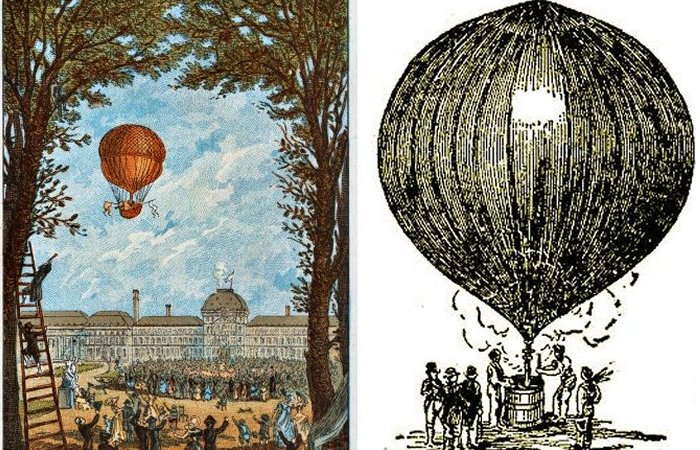AncientPages.com - On August 27, 1783, the first experimental hydrogen-filled balloon left Champs de Mars, Paris. The balloon had 13ft (4m) in diameter and was made of rubber-coated silk. The vehicle was crewless and reached a 900m altitude.
On the 26th, the balloon was moved secretly by night to the Champ de Mars, a distance of 4 kilometers.
On the next day, an immense concourse of people covered the Champ de Mars, and every spot from which a view could be obtained was crowded.
A cannon signaled the ascent at about five o'clock, and the balloon rose to about 3000 ft. with great speed.
A shower of rain began to fall directly after it had left the earth in no way checked its progress, and the excitement was so great that thousands of well-dressed spectators, many of the ladies, stood exposed, watching it intently the whole time it was in sight.
The balloon remained in the air for about three-quarters of an hour and fell in a field near Gonesse, a commune in the northeastern suburbs of Paris, France.
The event left the local farmers so terrified that they attacked it with pickaxes and spades, leaving only torn remains.
The name knew hydrogen gas of inflammable air, and balloons inflated with gas have ever since been called by the people air balloons, the kind invented by the Montgolfiers being designated fire balloons. The balloon was comparatively small, a 35 cubic meter sphere of rubberized silk, and only capable of lifting ca. twenty pounds.
One of the spectators present for the demonstration was the American ambassador Benjamin Franklin.
The gas had been manufactured, beginning on August 23, 1783, by pouring 225kg of sulphuric acid over half a ton of scrap iron.
The balloon could lift ca. 9kg and traveled 24km in about forty-five minutes.
It was filled with hydrogen that had been made by pouring nearly a quarter of a tonne of sulphuric acid onto half a ton of scrap iron. However, as it was not passed through cold water, difficulty was experienced in filling the balloon (the gas was hot when produced, but as it cooled in the balloon, it contracted).
AncientPages.com
Expand for referencesReferences:
